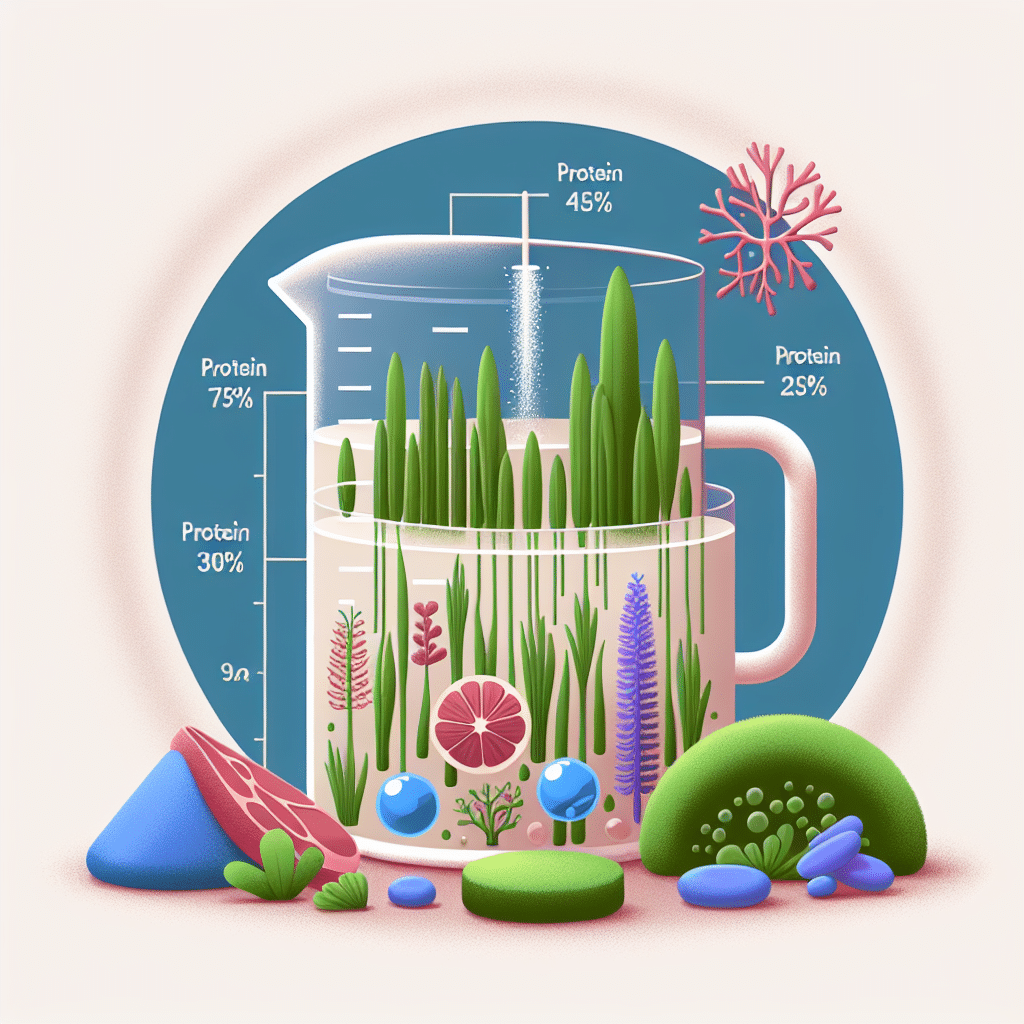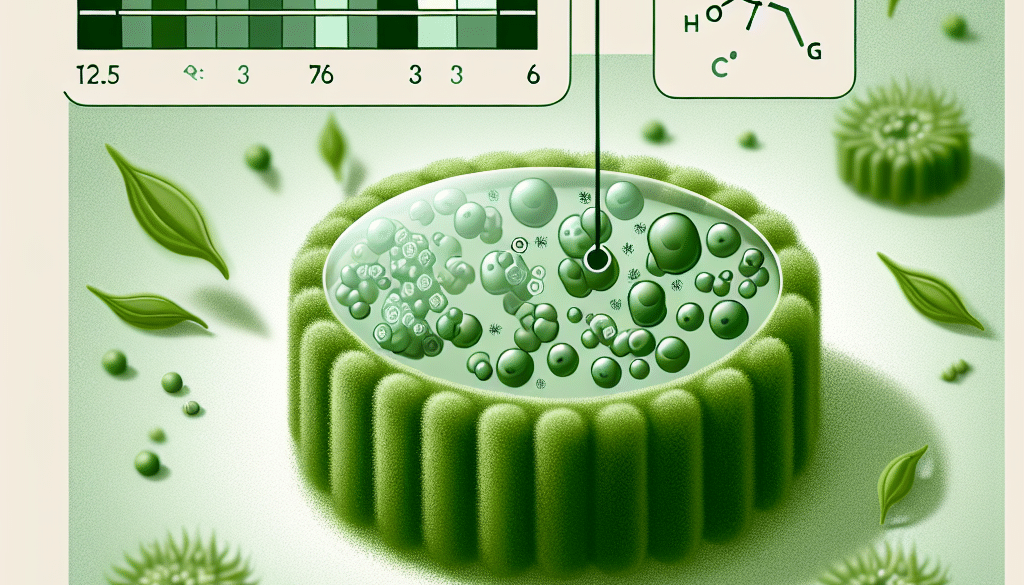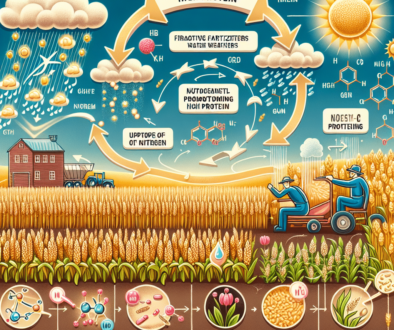What Is The Total Protein Content Of Microalgae?
-
Table of Contents
- Microalgae Protein Content: A Comprehensive Analysis
- Understanding Microalgae as a Protein Source
- Protein Content Variability in Microalgae
- Factors Influencing Protein Content in Microalgae
- Extraction and Purification of Microalgae Protein
- Applications of Microalgae Protein
- Case Studies and Research on Microalgae Protein
- Challenges and Future Prospects
- Conclusion
- Discover ETprotein’s High-Quality Protein Products
Microalgae Protein Content: A Comprehensive Analysis

Microalgae have been gaining attention as a sustainable and high-quality source of protein. These microscopic organisms are not only a cornerstone of aquatic ecosystems but also a potential key player in the future of nutrition and food security. In this article, we delve into the total protein content of microalgae, exploring its significance, variability, and potential applications.
Understanding Microalgae as a Protein Source
Microalgae are a diverse group of photosynthetic organisms that can be found in both freshwater and marine environments. They are capable of converting sunlight, carbon dioxide, and nutrients into organic compounds, one of which is protein. The interest in microalgae as a protein source stems from their rapid growth rates, minimal land requirements, and ability to thrive in a variety of conditions.
Protein Content Variability in Microalgae
The protein content in microalgae can vary significantly depending on the species, environmental conditions, and cultivation methods. Generally, microalgae protein content ranges from 40% to 70% of their dry weight, making them a highly potent source of protein.
- Spirulina (Arthrospira sp.): One of the most well-known microalgae, Spirulina, can contain up to 60-70% protein by dry weight.
- Chlorella: Another popular microalga, Chlorella, has a protein content that ranges between 50-60% of its dry weight.
- Dunaliella: This genus is known for its beta-carotene production but also contains around 40-50% protein.
- Scenedesmus: This microalga can have a protein content of approximately 50-56%.
It’s important to note that these figures can fluctuate based on factors such as nutrient availability, light intensity, temperature, and the stage of growth.
Factors Influencing Protein Content in Microalgae
Several factors can influence the protein content in microalgae, including:
- Nutrient Supply: Nitrogen is a critical nutrient for protein synthesis in microalgae. Limiting nitrogen supply can reduce protein content, while an adequate supply can enhance it.
- Light Conditions: Light intensity and photoperiod can affect the photosynthetic activity and consequently the protein content.
- Harvesting Time: The growth phase of microalgae can impact their protein levels, with certain stages yielding higher protein content.
- Cultivation Methods: Open ponds and photobioreactors are common cultivation systems, each with its own impact on microalgae growth and protein content.
Extraction and Purification of Microalgae Protein
Extracting protein from microalgae involves cell disruption, followed by various purification processes. Techniques such as centrifugation, filtration, and chromatography are employed to isolate and purify the protein. The efficiency of these methods can affect the yield and quality of the final protein product.
Applications of Microalgae Protein
Microalgae protein has a wide range of applications due to its high nutritional value and functional properties:
- Food and Beverage: Microalgae protein can be used as an ingredient in food products, offering a plant-based protein alternative for vegan and vegetarian diets.
- Animal Feed: It serves as a sustainable protein source in aquaculture and livestock feed, reducing reliance on traditional feeds like soy and fishmeal.
- Nutraceuticals: Due to its rich amino acid profile, microalgae protein is used in dietary supplements and health products.
- Cosmetics: The antioxidant properties of microalgae protein make it a valuable ingredient in skincare products.
Case Studies and Research on Microalgae Protein
Several studies have highlighted the potential of microalgae as a protein source. For instance, research on Spirulina supplementation has shown positive effects on malnutrition, immune function, and antioxidant status. Another study on Chlorella revealed its ability to improve lipid metabolism and reduce body fat.
Challenges and Future Prospects
While microalgae offer a promising protein source, there are challenges to overcome, such as optimizing cultivation systems, reducing production costs, and improving consumer acceptance. However, with ongoing research and technological advancements, microalgae have the potential to become a mainstream protein source in the future.
Conclusion
The total protein content of microalgae is a testament to their potential as a sustainable and efficient protein source. With variability depending on species and cultivation conditions, microalgae can offer a versatile solution to meet the growing global protein demand. As research continues to unlock the full potential of microalgae, we may soon see them play a pivotal role in nutrition and food security.
Discover ETprotein’s High-Quality Protein Products
If you’re interested in exploring the benefits of plant-based proteins, ETprotein offers a range of high-quality protein products derived from various sources. Their commitment to non-GMO, allergen-free, and organic proteins ensures that you receive the best in terms of both nutrition and taste.
About ETprotein:
ETprotein, a reputable protein and L-(+)-Ergothioneine (EGT) Chinese factory manufacturer and supplier, is renowned for producing, stocking, exporting, and delivering the highest quality organic bulk vegan proteins and L-(+)-Ergothioneine. They include Organic rice protein, clear rice protein, pea protein, clear pea protein, watermelon seed protein, pumpkin seed protein, sunflower seed protein, mung bean protein, peanut protein, and L-(+)-Ergothioneine EGT Pharmaceutical grade, L-(+)-Ergothioneine EGT food grade, L-(+)-Ergothioneine EGT cosmetic grade, L-(+)-Ergothioneine EGT reference grade and L-(+)-Ergothioneine EGT standard. Their offerings, characterized by a neutral taste, non-GMO, allergen-free attributes, with L-(+)-Ergothioneine purity over 98%, 99%, cater to a diverse range of industries. They serve nutraceutical, pharmaceutical, cosmeceutical, veterinary, as well as food and beverage finished product distributors, traders, and manufacturers across Europe, USA, Canada, Australia, Thailand, Japan, Korea, Brazil, and Chile, among others.
ETprotein specialization includes exporting and delivering tailor-made protein powder and finished nutritional supplements. Their extensive product range covers sectors like Food and Beverage, Sports Nutrition, Weight Management, Dietary Supplements, Health and Wellness Products, and Infant Formula, ensuring comprehensive solutions to meet all your protein needs.
As a trusted company by leading global food and beverage brands and Fortune 500 companies, ETprotein reinforces China’s reputation in the global arena. For more information or to sample their products, please contact them and email sales(at)ETprotein.com today.














